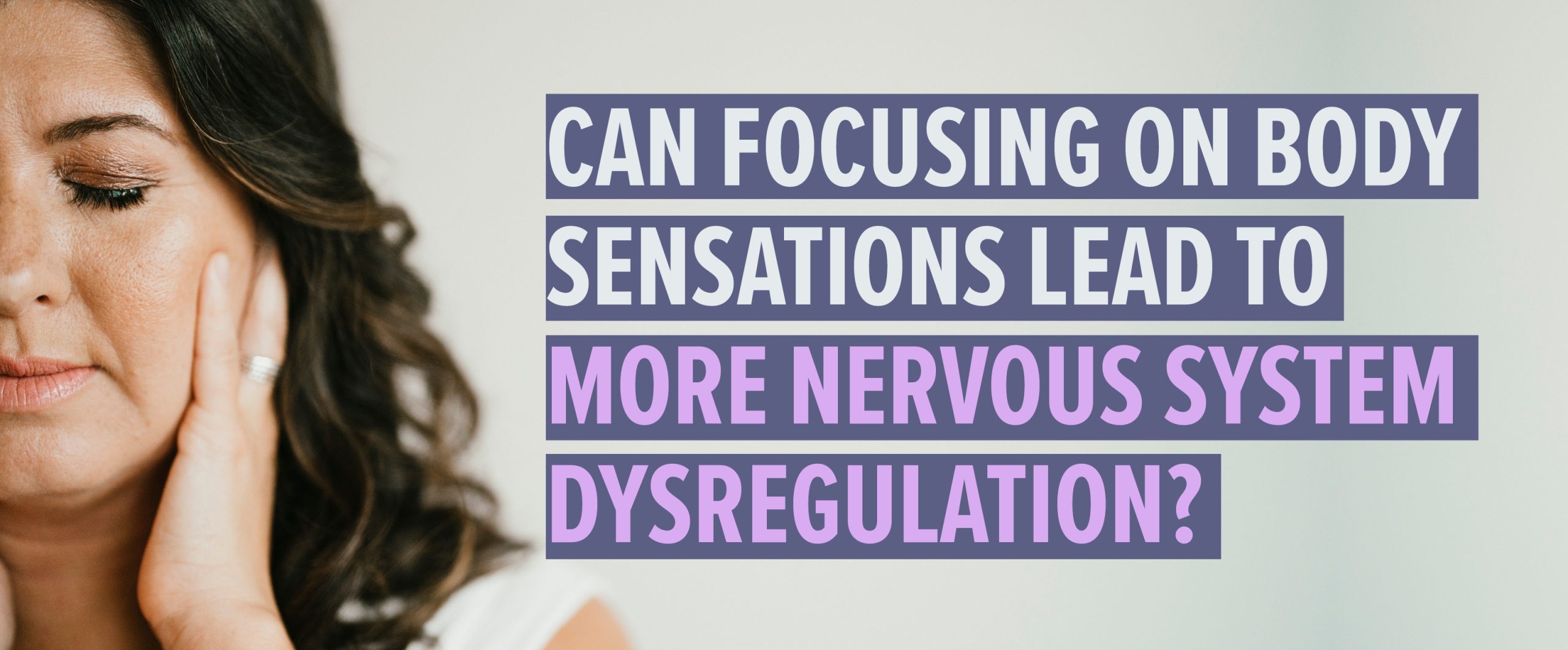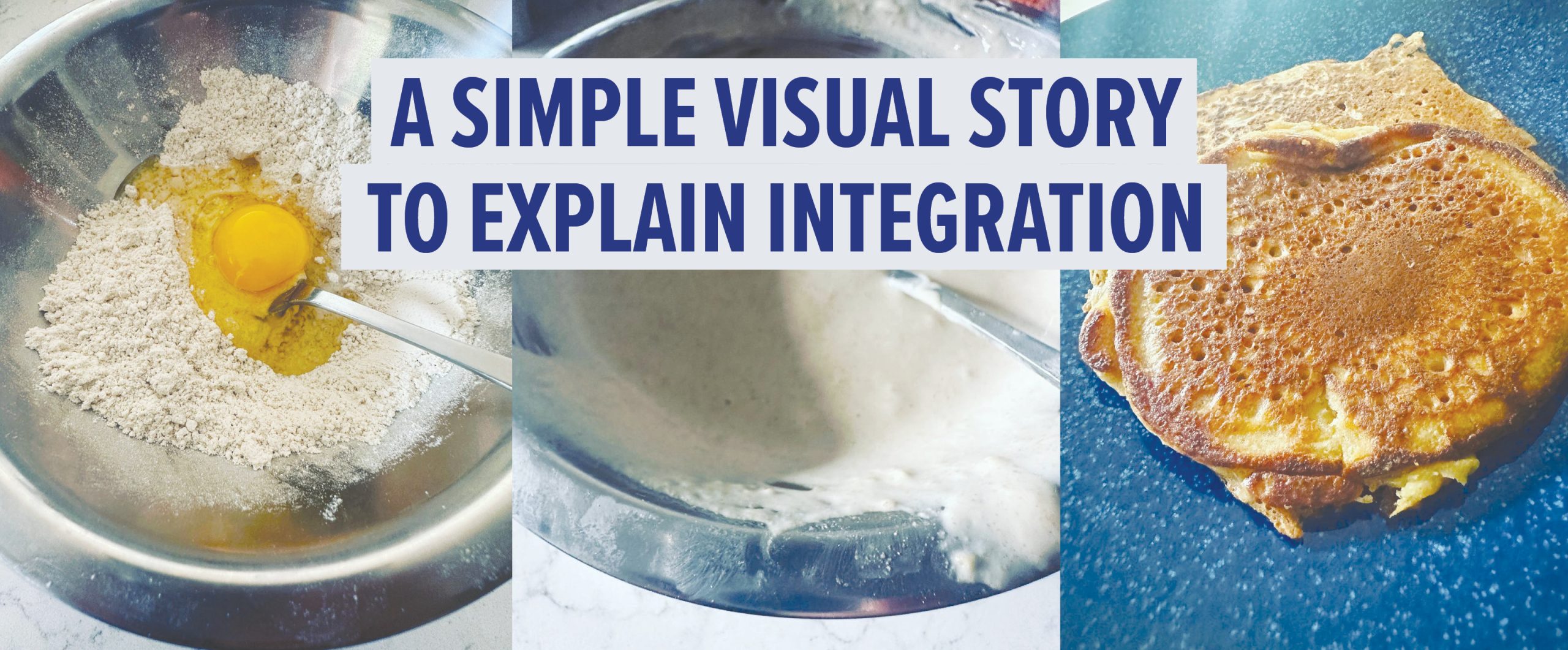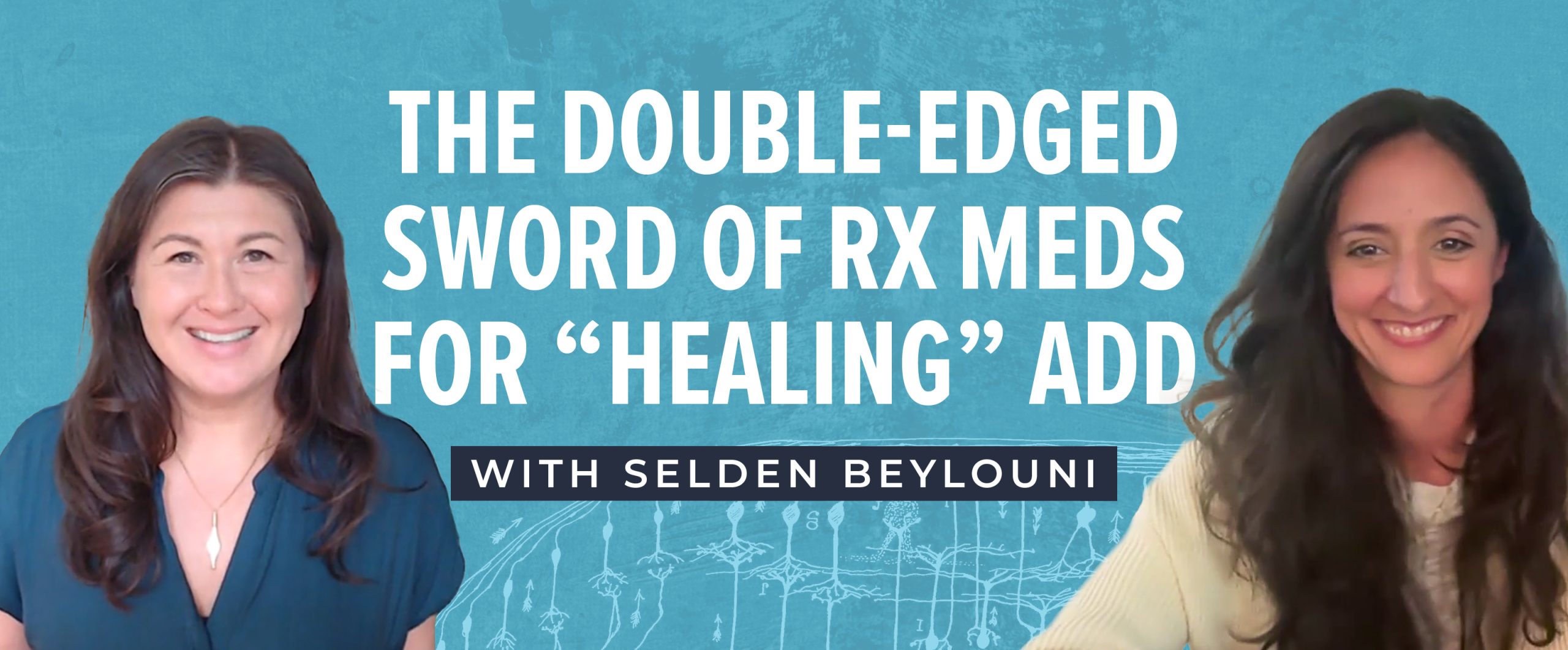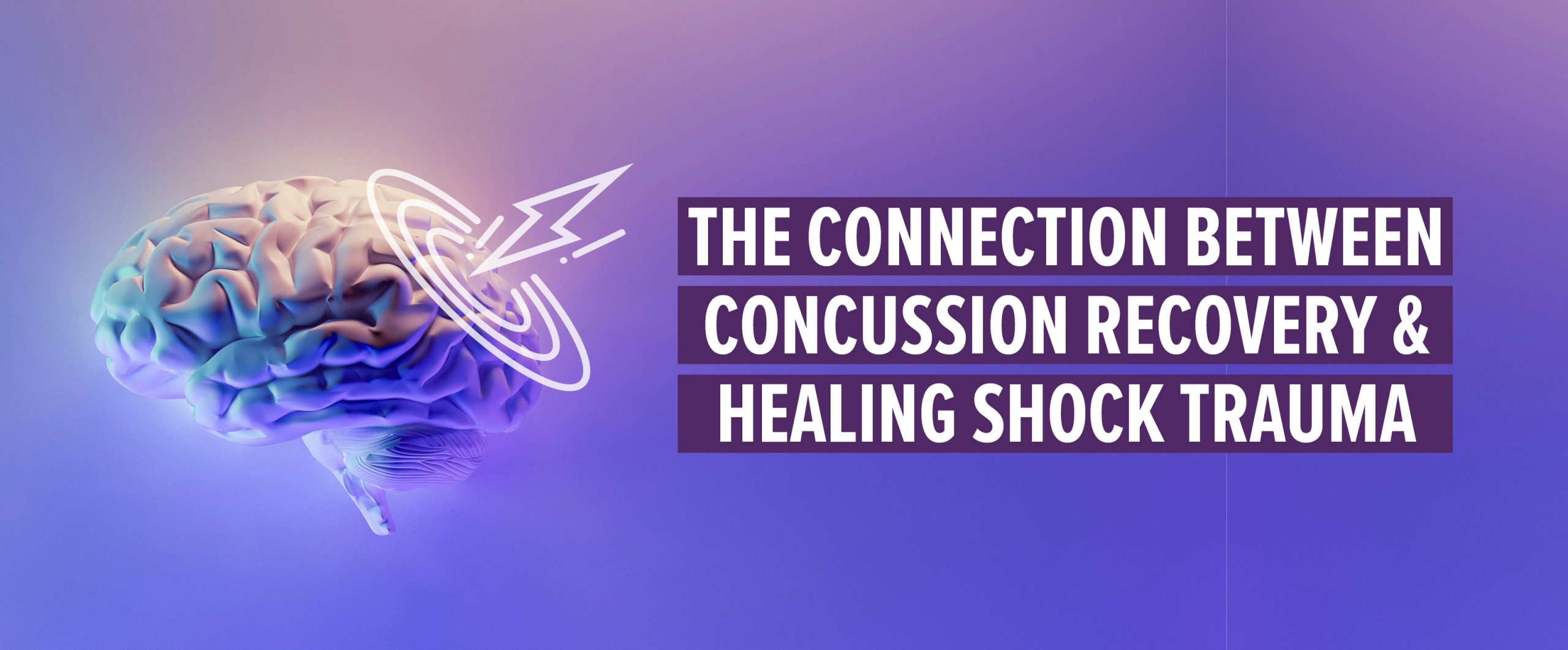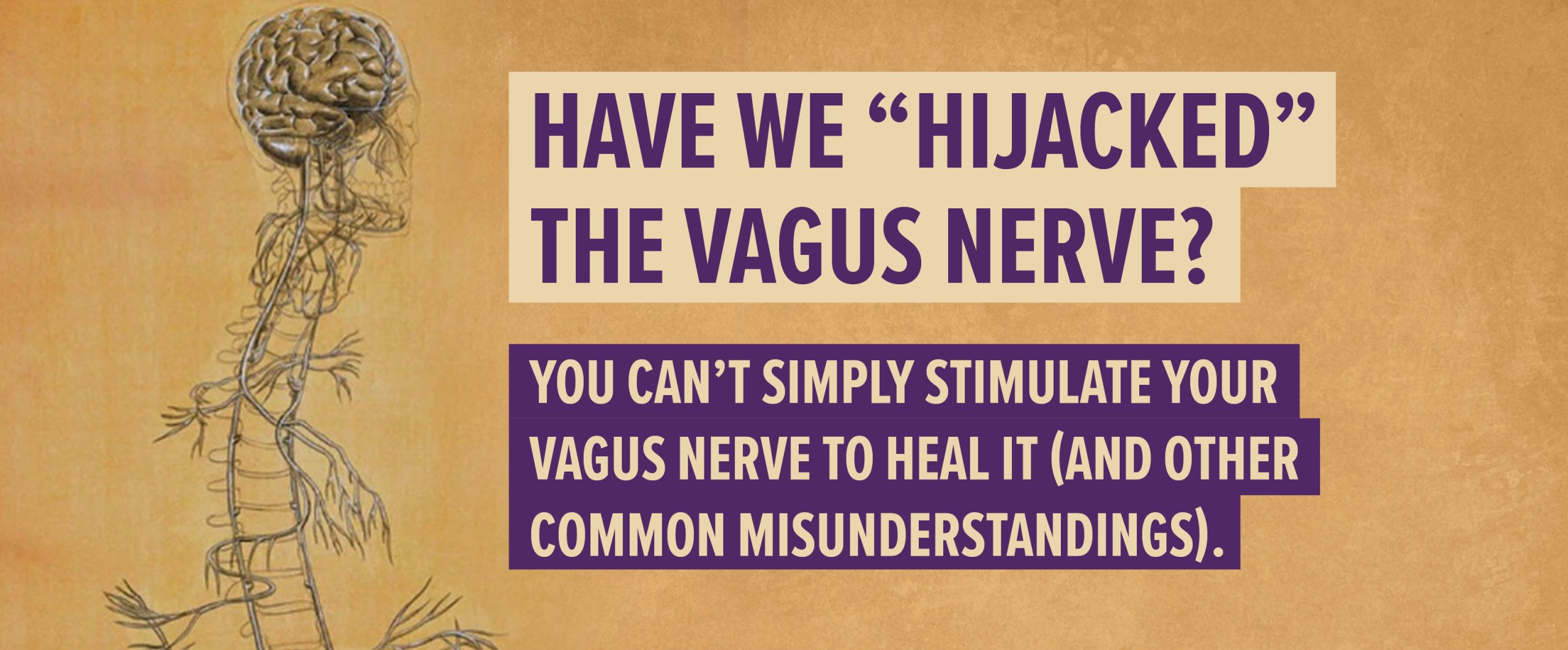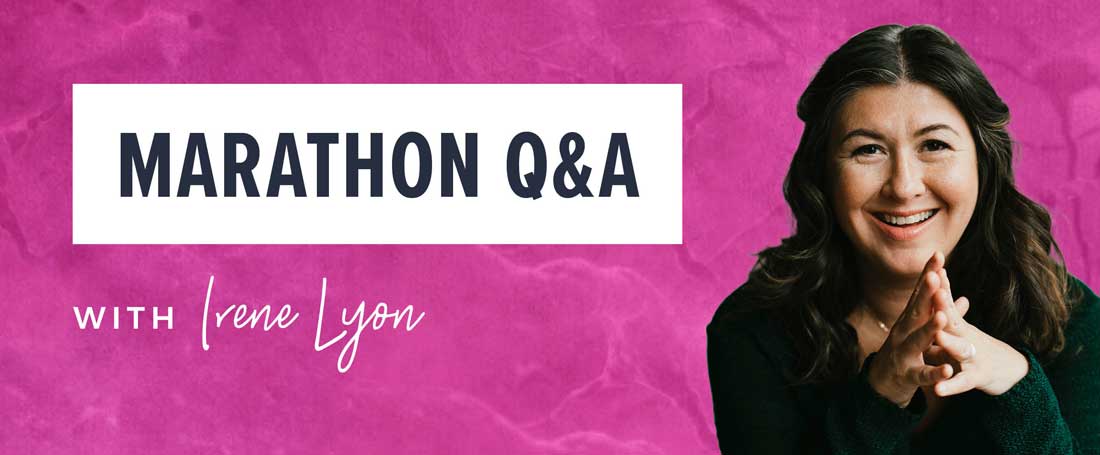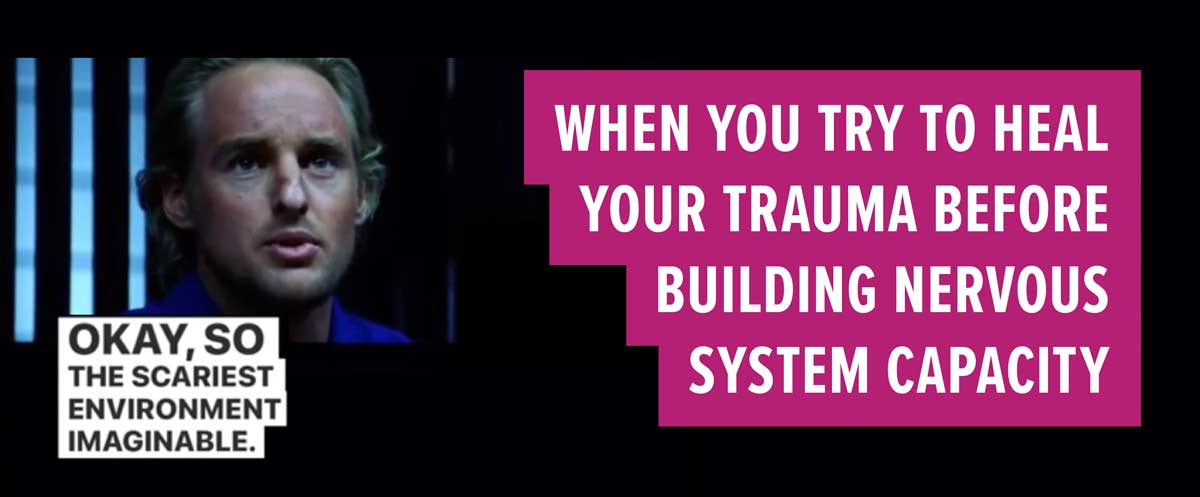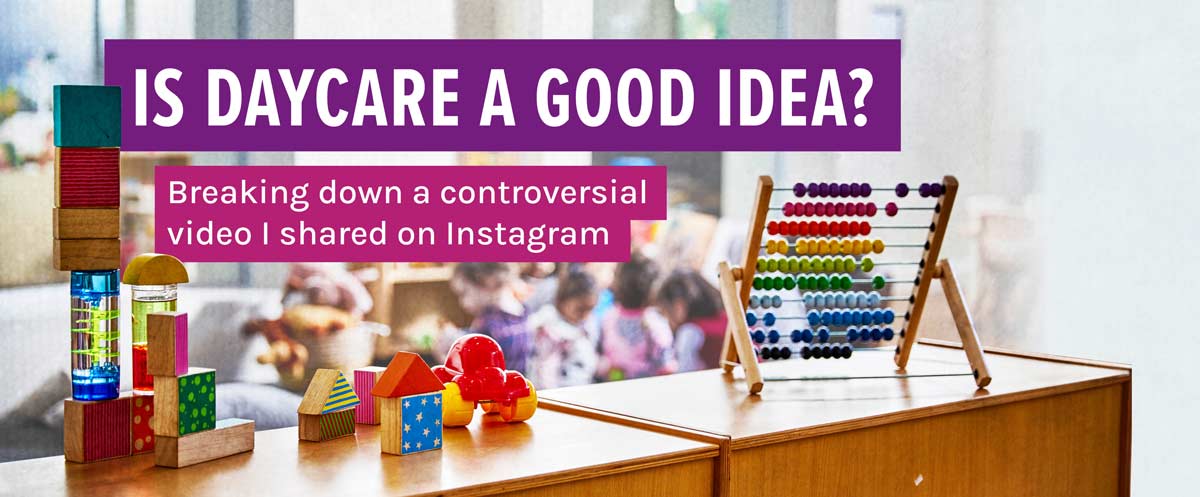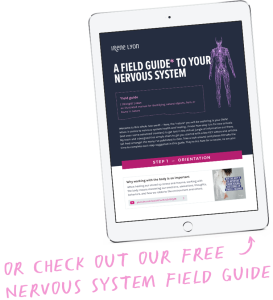All too often I hear folks say to my colleagues and me, “but I had such a good childhood” ?! 😉
This is the conundrum/question they pose when they find out that the probable cause for their (mysterious) ailments; their anxiety, stress, seemingly random panic attacks, challenges bonding with their newborn, toxic relationships, digestive and immune system troubles and a host of other things...are all linked to early childhood traumatic stress.
The research is out that links early childhood trauma stress (and stress in general) to the onset of adult disease. We gotta pay attention to these findings if we want to not only improve and heal our health, but prevent future dis-ease from happening.
What we are starting to learn is that trauma is not necessarily those big blow-up events like a massive car accident, surviving torturous abuse or being in combat.
We now know that a mom being slightly mis-attuned, meaning she is unable to properly ‘tune-in’ to her infant’s cues for care and attention, are experienced AS THE SAME kind of threat and stress to a child than being physically or sexually abused. A harsh reality to accept, but it is true.
So when I am faced with a client who can’t seem to figure out why they might be struggling so much, I will give them an overview of these nine types of experiences to see if any of them ring true.
Near-Death Experiences (NDEs)
Near-death experiences, often abbreviated as NDEs are quite common and are often overlooked because it is, in fact, an experience of survival and not death. And people often wondered how survival can be traumatic.
We now know that events like physical assault, sexual abuse and being on the battlefield end and folks survive, but the traumatic stress associated with them often continues in earnest - unless of course it is properly processed and healed.
This is true of common near death experiences as well. Choking, near-drownings, high fever, serious infections and viruses; anything that puts a human being’s physiology into a state of preparedness for dying and death can be traumatic. Instances such as high fever, infections and viruses, the state of being delirious and not being able to fully comprehend what is happening are all highly dis-orienting and can bring a person into what is often known as an ‘out of body’ experience and this ties into the next experience (surgery and anesthesia) on the list.
Other near-death experiences, all highly dis-orienting, are being knocked unconscious, being in a coma, having the heart stop are also in this category.
I recommend the movie The Hereafter starring Matt Damon and directed by Clint Eastwood to see how different types of near-death experiences can impact us and how all things are truly connected. Another resource I recommend for a true tale of near-death experience and healing at a deep cellular and spiritual level is the book, Dying To Be Me - My Journey from Cancer, to Near Death, to True Healing by Anita Moorjani
Surgery and Anesthesia
The founder of Somatic Experiencing, Peter Levine, writes extensively about his first client, whom he calls Nancy, and how an early surgery, a routine tonsillectomy when she was a young girl, induced a strong stored traumatic memory in the nervous system due to an incomplete urge to flee the scene as she was strapped down and sedated. Her chronic illness didn’t show up until adulthood, at a point in time when she was under greater stress, and it was the release of the stored traumatic memories from this scary surgical experience that allowed her system to finally heal and no longer be living in a survival stress state.
Other examples of surgical trauma would be waking up while under surgery or going into surgery in a high fear state.
You can read her story in Peter Levine’s books, Waking The Tiger and In An Unspoken Voice.
Premature Birth and/or Highly Traumatic Birth
While we all hope for a birthing experience to be ‘as nature’ intended, such that the female human body goes into birth mode with ease and produces all the right conditions so baby can be born without aid, this is not always the case. When complications arise, or when the little one is simply not ready to budge, or is stuck in an undesirable spot, and there is a need to poke, prod and maybe pull them out with force and devices (such as with forceps, vacuum, or human force), this is considered to be birth trauma.
Another common situation is a baby being born premature which means, for the most part, their organ systems (often the lungs) are not fully functional. In such cases they after often put into an incubator and at times need to be hooked up to tubes and devices to keep them alive. While this is good so as to preserve life, it is also HIGHLY stressful on an immature little human who cannot make sense of what is happening to them.
We know that such little ones feel EVERYTHING and still log the experiences they are having in their nervous system, in their organ systems and in their somatic (body) self.
The other thing that happens in many of these traumatic and premature birth situations is that primary bond and attachment between the mother and infant is compromised.
Thankfully, with the work that Kathy Kain and Stephen Terrell are doing, two of my mentors, we now know how to help treat and heal these early experiences. Be it when the human is still very little, or they are an adult who wants to heal their early wounds. I’ve provided some references and links to seek out this method of work below.
In Utero Stress
It goes without saying that the environment an unborn child lives in while in the womb can be one of goodness and care, or one of stress and hostility. We know that mothers who are under high stress while pregnant, and/or living in and around unsafe conditions (war, abusive partner etc.) will pass along their stress chemicals to baby while they are in utero. For further reading, I recommend Gabor Maté’s personal story as told in his book Scared Sick - The Role of Childhood Trauma in Adult Disease, which tells his real-life story of being born into Nazi occupied Hungary during the second world war and how this early start created a map in his physiology that was wired for stress, addiction, ADD and other lifelong difficulties.
Parental depression and/or a parent that is unwell and unable to truly care for, and connect with, their kids.
A lack of connection and safety for an infant or child creates a chronic state of fear of the world with the typical pattern of thought and behaviour being something along the lines of, ‘the world is a dangerous place and we are all gonna die’, coupled with a fear of people who are actually helpful, attuned and caring (as this is opposite to what the wiring in the brain and physiology knows as ‘safe’).
This also falls into The ACE questionnaire that was developed via the ACE Study (ACE standing for Adverse Childhood Experiences Study). For a touching account of the origins of this groundbreaking epidemiological research be sure to watch The Tribute to Dr. Vincent Felitti and how he ‘stumbled’ across the link between early stress and obesity and chronic illness later in life.
Societal Decencies and Cultural Conditioning
This is a big one and is so enmeshed in our cultures that we hardly notice it happening. Societal ‘decencies’ is a term I use to describe the daily training and conditioning we receive, very young in life, that’s meant to keep up ‘good, quiet and proper’ behaviour (think of the common concept of ‘children should be seen and not heard’ or that “British stiff upper lip”). While this might seem benign to some and may seem like a good idea so as to keep kids ‘in place’ and not getting into trouble, it does come at a high cost when this occurs with a lot of toxic shaming and belittling of the child.
Humans are, by design, highly creative, playful and expressive beings and we must be raised with equal parts healthy boundaries and discipline, learning right from wrong (a concept often known as ‘healthy shame’), and we must be given space for creative play, being downright silly and fostering of what is called healthy aggression. Healthy aggression sparks up our life force energy and internal feelings of worth and the idea that we deserve a life of goodness and health.
Other areas where we tend to muck up a person’s biological processes and their capacity to properly listen to and fulfill their biological needs comes from how we handle food and hunger, as well as healthy digestive processes that create gas and odor. For example, when we are forced to eat ‘all the food on our plate’ or the flipside to this, not allowed food or drink when we say we are hungry or thirsty, we mess with natural hunger and satiety cues that are built into our system so we can have a healthy life. While it might be tough for some to realize, infants and children are born knowing the levels of food they need. The key is ensuring they are given healthy and delicious food options and not making a big deal about what they are eating, while also making sure bribes and guilt-trips are never used around food.
Finally, normalizing and not bringing any extra attention to how our digestive and other bodily processes work is key. By this I mean ensuring passing gas of any kind does not need excusing, nor does sneezing or coughing.
Intergenerational trauma
This is never a fun one to write about, but again, it’s true we ‘keep’ and express the trauma of our ancestors if we do not consciously and actively work to heal it from a nervous system and neurobiological level.
I’d recommend you take a few minutes to watch one of my main mentors, Kathy Kain, a leader in the healing of early and developmental trauma, talk about this. Just click here and this link will take you to the point in our interview where we speak about this. This is something to pay attention to if you actually know you didn’t experience any of the above and life has been pretty darn good to you, but you are still someone who gets anxiety, gets overwhelmed easily and/or you are riddled with health troubles.
If we land on this as our reality and we realize we are carrying the genetic imprints of war, famine and inconceivable hardships from our ancestors then, my friend, it is up to you to take this information in, feel it, grieve some for those who didn’t have the knowledge we have now to heal at this deep nervous system level, and do the healing that is necessary to stop the cycles of survival stress and trauma from repeating themselves. While it might seem unfair that we should be burdened by stuff that we didn’t have any control over, nor signed up for, it was probably the same for your ancestors as well.
This is where the concept of ‘taking one for the team’ comes in pretty handy. 🙂
The need to be always be ‘perfect’ (and perform for love and attention)
It is shocking how common and accepted this is, especially in the realms of education, sports, fitness, beauty and artistic performance. The demand placed on children when we try to force them to be what we wish them to be (whether they want to or not), or even to place undue strain and a need for perfection on something they are naturally good at, is toxic and incredibly harmful. Unfortunately, this often gets missed because this kind of behaviour often raises human beings who are incredibly skillful and disciplined in their fields.
But the human being is meant to be creative, playful and full of life force energy that is channeled into expressions of their own unique, authentic nature, so this kind of outside demand for perfection from those upon whom we are dependent for our survival as children is a perfect setup for deep depression and other forms of mental illness later in life. Psychiatrist and childhood trauma specialist Dr. Bruce Perry’s book, Born For Love - Why Empathy is Essential and Endangered, is a wonderful book full of real-life examples that depict what happens when folks aren’t given proper connection, love and acceptance.
Past Life Trauma
Yes, past life trauma. Meaning, stuff that didn’t happen to you in this lifetime. If all the other eight experiences are not true for you, then I would highly consider looking into the concept of past life trauma. This is different from intergenerational trauma and to understand this one must believe in the soul and that life exists after we die. We also must believe that once we die, a soul moves on and can inhabit a new person and can do this over and over again.
I came across this concept by fluke when I was doing my Master’s of Research work in Australia. I went to the library to get a book from the stacks and I had written the wrong call number on my scrap piece of paper so when I got to the section and saw that I was clearly not in the cellular biology section, I decided to use that opportunity to have a break (procrastinate), check out where I was in the library and low and behold I landed on a book that I ended up reading in two days!! To this day I still recommend it to my clients when we can’t figure out why they are so stuck. The book is called, Many Lives - Many Masters and it is written by a psychiatrist by the name of Brian Weiss. I won’t say much more except to say that if you felt a little spark of ‘hmmm, that sounds interesting’ or maybe ‘that’s stupid and impossible’, then I’d suggest buying this book and digging in. Dr. Weiss’ story is astonishing because he stumbled across this work kind of like I stumbled across his book: by accident. He was doing his usual practice with a patient and before he knew it they were uncovering past lives that once realized, felt, and processed, were the key to healing her symptoms.
Here is a video interview I did on past life trauma and how it can effect us, with my good friend, colleague, and past student Janet Raftis, who specializes in psychic phenomena, the soul/spirit world, and healing these often invisible parts of us ... https://youtu.be/bNQf_ItVxfU
***
While this list, plus all that comes with it, could be seen as negative and downright depressing, I see it as much needed information that we have been waiting on for a very long time. I hope you can see that too!
Finally we have what we need to begin the process of turning around the programming and the many ways of living that have kept us in so much survival stress: expressing the diseases of our genetic predispositions. We can now make good use of the science, greater self-awareness, people’s discoveries and increasingly common somatic healing practices to help turn on our healing DNA once and for all.
As more and more people learn these intricacies and take stock of what is actually hindering them, and then take the necessary steps they need to spark up their own healing potential, my prediction is some good stuff will start to happen at the individual, community and even global level.
p
Resources and References
Somatic Practice - The work of Kathy Kain. Her primary focus is training practitioners.
Nurturing Resilience - Helping Clients Move Forward from Developmental Trauma - An Integrative Somatic Approach - To read more about the impact of early trauma and the developing nervous system, be sure to read which was written by two of my colleagues and teachers, Kathy Kain and Stephen Terrell.
Stephen Terrell - Steve is trained in Somatic Experiencing, and co-authored the aforementioned book, Nurturing Resilience. He and Kathy Kain co-teach a speciality training called Somatic Resilience and Regulation - a speciality training for somatic and trauma-informed professionals who are looking to better understand and work hands-on to help clients heal early and developmental trauma.
Ray Castellino - While I have not personally trained with Ray Castellino, many of my Somatic Experiencing and Somatic Practice colleagues have and they recommend his form of work for healing peri- and prenatal trauma.
Somatic Experiencing - To find a Somatic Experiencing (SE) practitioner visit the SE directory.
SmartBody Smartmind™ - SmartBody SmartMind is the creation of Irene Lyon (the author of this article). It is an interactive online nervous system rewire program that blends the work of Somatic Experiencing, Somatic Practice and The Feldenkrais Method. It provides the foundational education and practices to begin the process of healing trauma and restoring nervous system health.


